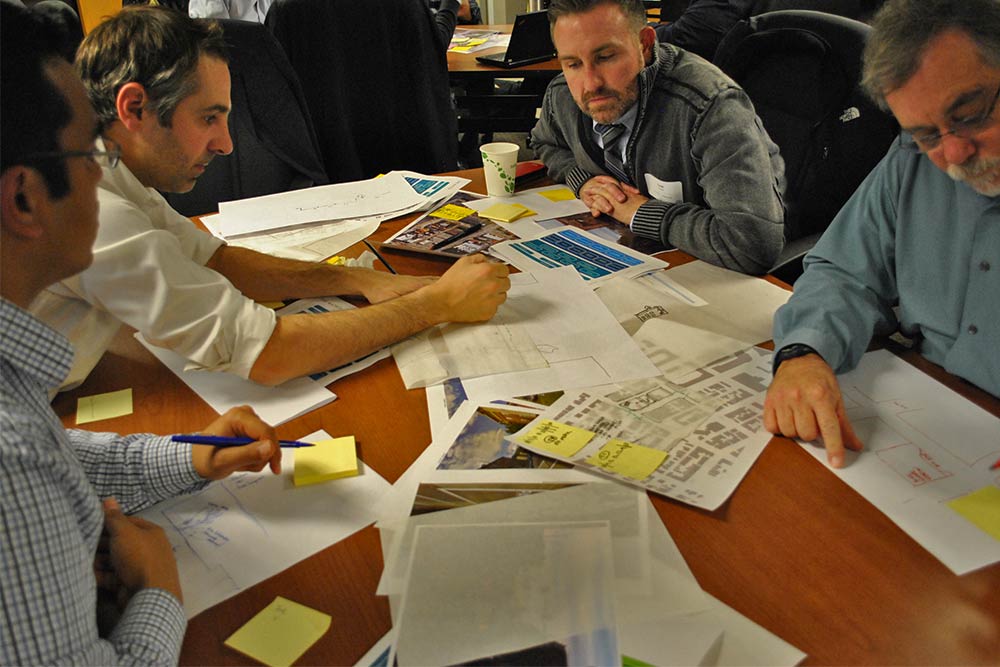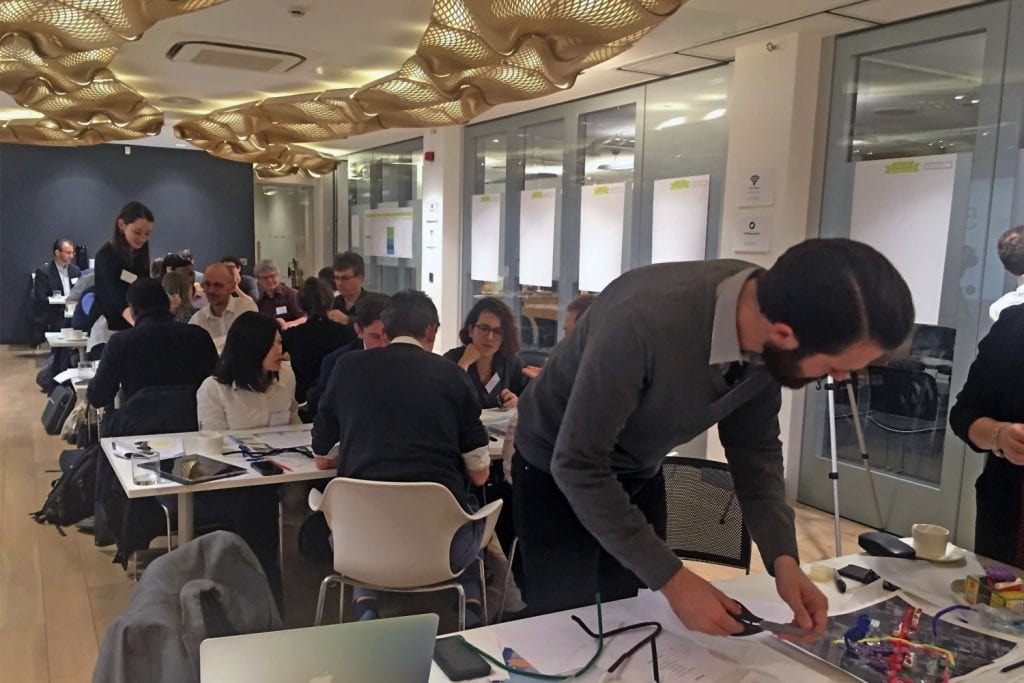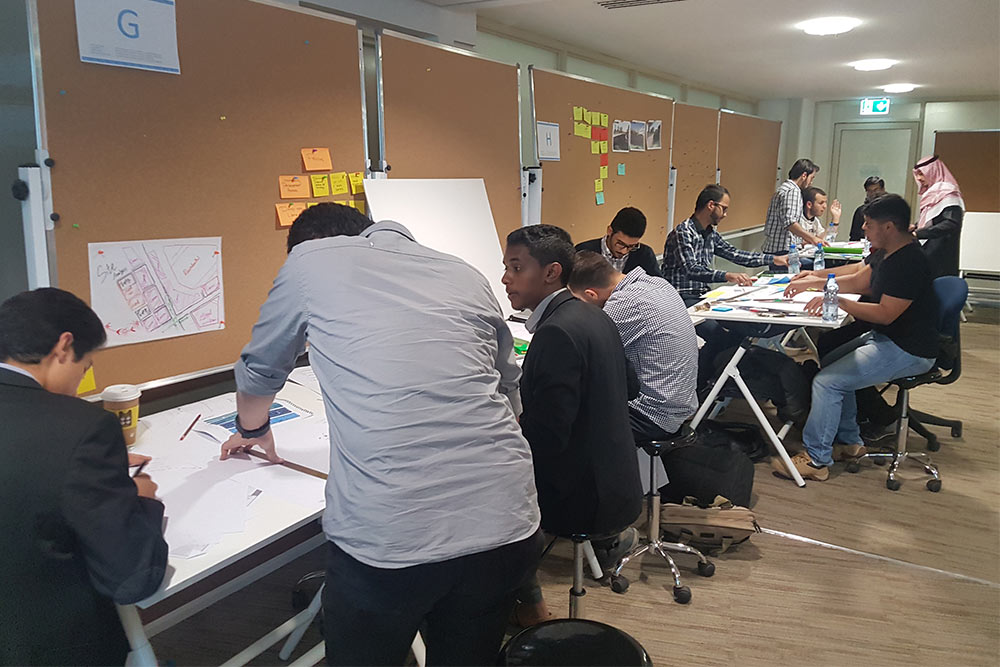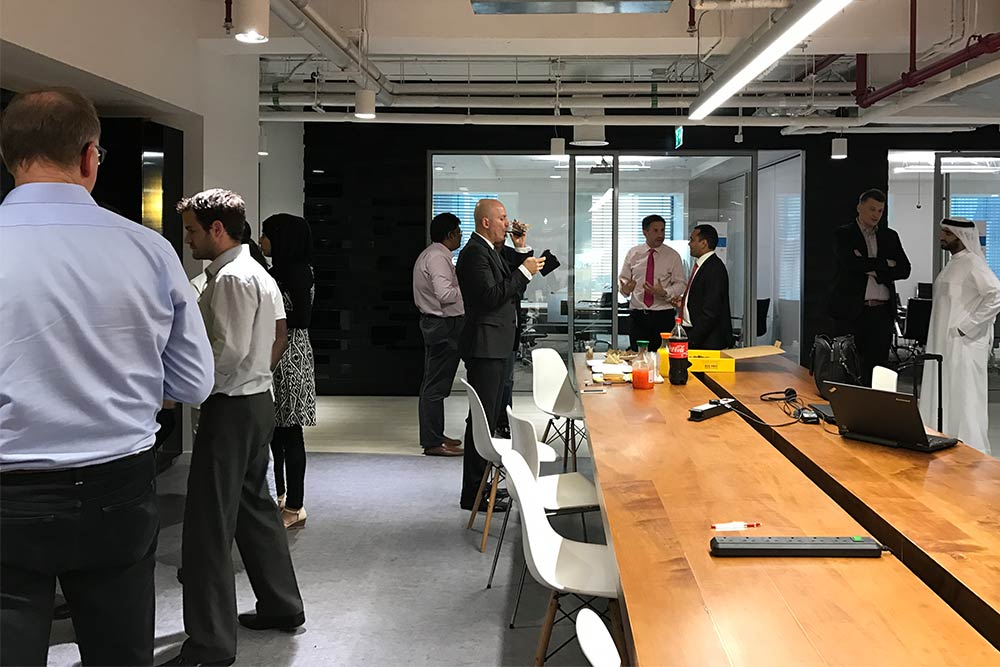Connected and autonomous vehicles

Technological advancement for autonomous vehicles accelerated in 2015 and, suddenly, everyone was talking about a future of connected and autonomous vehicles (CAV). At BuroHappold, we wanted to understand what it might mean for our cities. How will our cities be impacted?
City’s embrace of self-driving technology at forefront of planning summit
Pittsburgh Post-Gazette
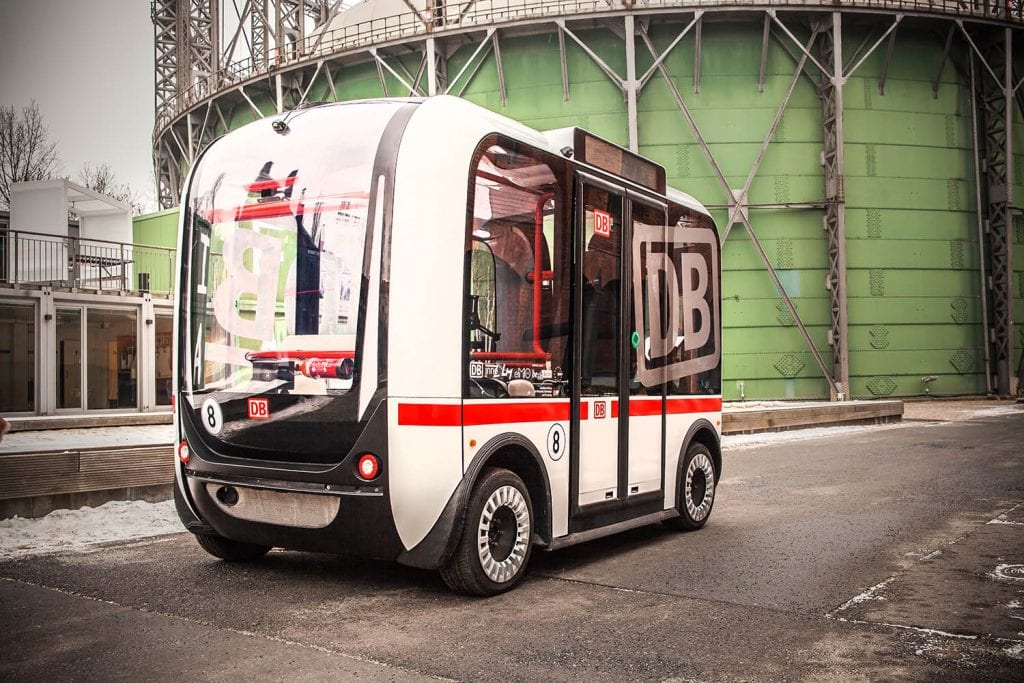
To explore the opportunities CAVs bring, Buro Happold undertook a series of Global Design Sprints to address the question: How can urban streets be reclaimed and reimagined through the introduction of connected and autonomous vehicles?
What Happens to Cities When a Computer Takes the Wheel?
concrete gmp
Sprint overview

Connected and Autonomous Vehicles (CAVs) are on everyone’s mind. While it is unclear how fast they are becoming business as usual, it is almost impossible to ignore that they will be a key mode of transport in the medium to long term.
Autonomous Vehicles Reimagined
Green Building Alliance
To explore the opportunities CAVs bring, BuroHappold has launched the Global Design Sprints to address the question: How can urban streets be reclaimed and reimagined through the introduction of connected and autonomous vehicles?
Global Design Sprints bring a diverse group of people with various skills and expertise together to solve a problem by thinking collaboratively, innovatively, and creatively. Design Sprints are often used for product design (see, for example, Google Developers Design Sprint) and are structured brainstorming sessions that allow for the development of versatile and creative ideas within a relatively short amount of time.
Bath 2030: Could driverless vehicles solve the city’s traffic woes?
Bath Chronicle
Publications
Our global design sprints
Our view on CAVS
Cities across the world face the dichotomy of trying to improve access and connectivity in the face of decreasing air quality, major traffic jams and an over-reliance on fossil fuels. When Mr Ford and his contemporaries had promoted their motor cars, city planners gave centre stage to this new icon of modernity – little realising the negative consequences of their actions.
Today, autonomous and connected vehicles being pioneered by Google, Tesla, Nissan and many other major automobile companies promise to solve the dichotomy by less pollution, greater efficiency in the use of road space, and improved mobility opportunities. But, there are also a number of recognisable and, almost certainly, unforeseen consequences, which, if we are to avoid the downsides that accompanied the motor car, need to be identified and resolved in order to take best possible advantage of a rapidly advancing, new era in urban mobility.
At Buro Happold, we continue to push ourselves to deliver increasingly effective, integrated and sustainable urban solutions for clients. It is why we are so committed to better understanding the unfolding progress of the technology and the motor industry – so that we can better support and advise our clients, whether city administrators or private sector developers, and promote solutions, which have flexibility to respond positively to the rapidly changing transport and mobility picture. We have invested in our own research and engagement with key players in this space through the Design Sprints, extending these across our set of international offices. We have seen some interesting outcomes from our events; however, if we were to highlight just three key issues, they might be the following.
Public Transport: What would make you choose to take a walk, cycle or ride from home to a public transport system, travel some distance and then undertake another set of travel arrangements to ones place of work rather than travel directly from point to point, in a private vehicle, with the ability to work or relax (even, sleep) en route? The answer is likely to be partly about cost but also, possibly, about lifestyle choice. We will need to find the right mechanisms to promote (and, indeed, enhance) mass transit systems to ensure that the convenience of CAVs does not create even more congestion on city streets. This is an area which will need not only changes to public transport delivery but, potentially, regulatory and fiscal intervention.
Future Proofing of Development: Many of the developments taking place in and around our cities are factoring-in large volumes of parking space. The value of urban land dictates that this is often structural parking and, in a number of case (at least partly) below ground. The sunk capital costs are significant and in many cases driven by planning authority parking standards based on historic data. The advent of CAV is likely to see the need for central parking reduce significantly. Why keep such an investment idle in a parking lot all day when it can be earning revenue ferrying others around? Why own such an asset rather than hire or rent when required? A challenge and an opportunity for the private sector will be to balance the need for parking provision that will change over the course of a maturing project. This will involve creation of flexible masterplans (and building structures), able to accommodate and adapt to change and an ability to engage in constructive dialogue with those responsible for the regulatory approvals process.
Changing Infrastructure Demands: The infrastructure required for CAVs is probably reasonably clearly defined in the minds of the technology and advanced automobile companies but far less so in terms of urban designers, utility companies, local highway authorities and the many other parties involved in delivering and maintaining the civic realm. Not only have these requirements to be more fully appreciated but they will need provisioning. Our Berlin office continues to be involved with research into the impact of an increasing volume of electric vehicles on the city landscape and this, of itself, introduces challenges relating to ownership, governance models and flexibility of approach. At a time when, in many parts of the world, the public sector does not have the funds to instigate a major investment programme for a changed set of infrastructure and the potential for a dwindling set of incomes from parking charges and road traffic offences, who pays and what mechanisms are available to support the necessary change?
Can we grasp the opportunity to transform our cities in the space of the next twenty years? Overcoming the vested interests of oil-based economies and the personal attachment to the motor car may offer stiffer sets of obstacles, but the prize of healthier and more efficient cities will prove an irresistible force for change. And we need to be planning for that future now but with as broad an appreciation as possible of all potential outcomes.
Talk to us
Sabina Uffer, Global Head of Cities Research
sabina.uffer@burohappold.com
